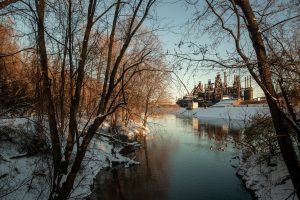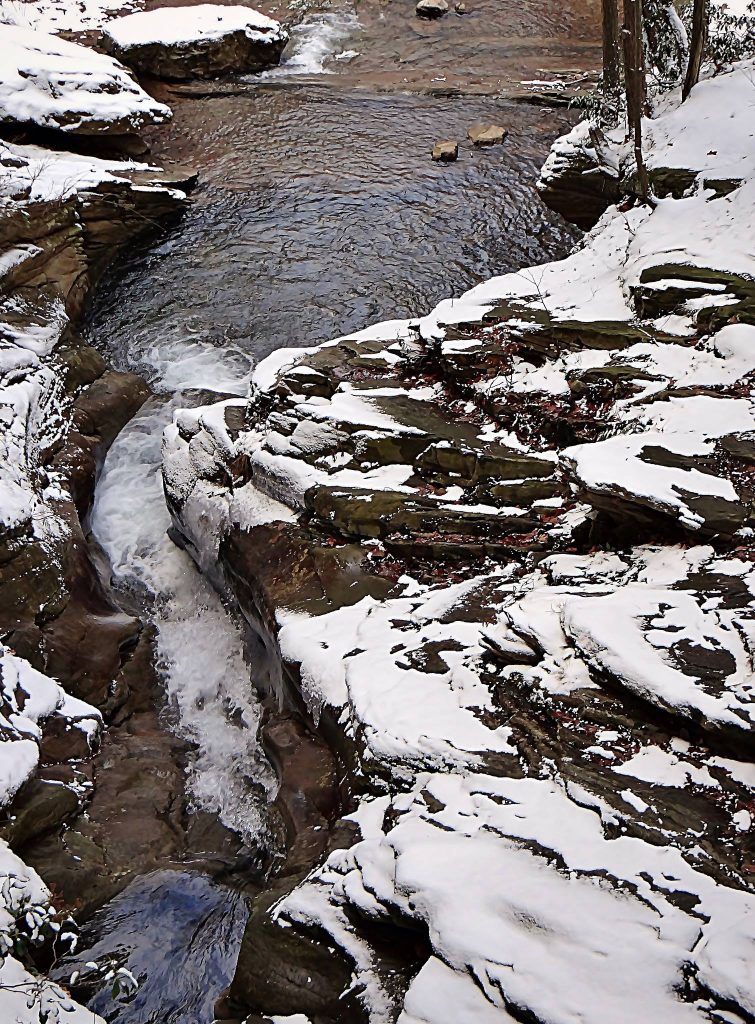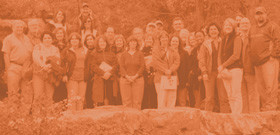The D&L Blog

There is no doubt that the D&L is a sight to see throughout the warmer seasons, but the cold frost that winter brings allows a new charm to take hold as the leaves fall and the waters freeze. Take a moment this winter to journey through the natural beauty and historical landscapes found throughout each region, you won’t regret it!
The Delaware Canal Region
Bristol
First settled in 1681, Historic Bristol Borough is the oldest town in Bucks County, one of the oldest in Pennsylvania, and home to the southern terminus of the D&L Trail.
A town resembling a New England seaport, the streets are dotted with local businesses that line the riverfront and allow for the perfect opportunity to stroll, shop, or dine no matter the season. Popular locations include the Bristol Cultural and Historic Foundation, the Grundy Library and Museum, and the Historical Society of Bensalem.
Nearby you’ll find, of course, the D&L Trail at Bristol Marsh and the 235-acre Silver Lake Nature Center, as well as two large floating docks with 32 boat slips and a fishing area. Don’t miss out on the Harriet Tubman Memorial Statue either, a must-see among Bucks County’s Underground Railroad sites.1
Washington Crossing
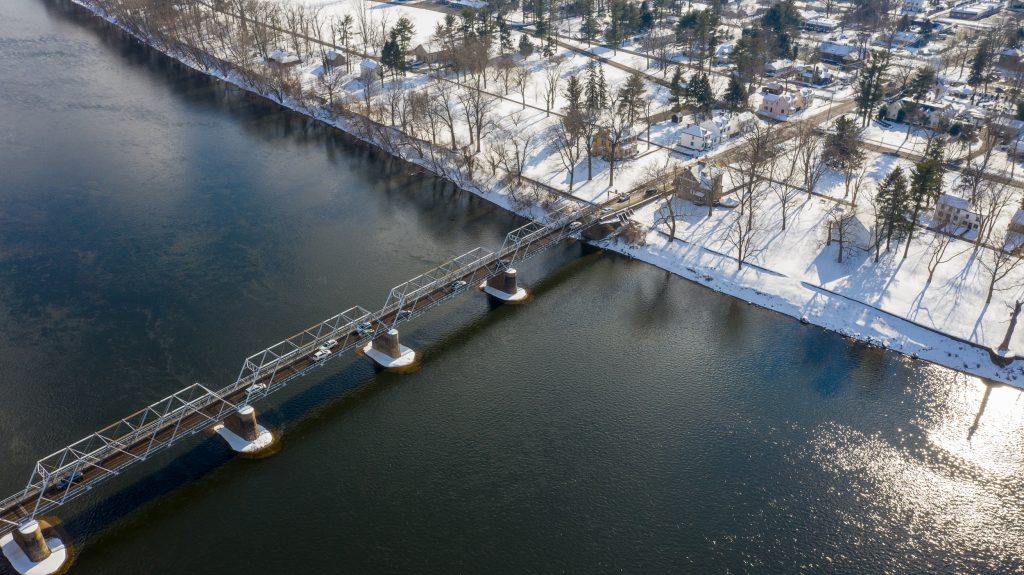
Washington Crossing is a National Historic Landmark, memorializing a moment that turned the tides of history during the Revolutionary War when George Washington gathered his tired troops to cross the Delaware River in below freezing conditions. This act of bravery caught the opposition by surprise, allowing the revolutionaries to successfully claim victory while boosting overall morale.
This 500-acre site includes 13 historic buildings along with the noted 100-acre Bowman’s Hill Wildflower Preserve and observation tower, offering guided interpretive tours and educational programming. There are also a number of events held throughout the year, including the Crossing dress rehearsal and Christmas Day Crossing, General Washington’s birthday celebration, several fundraisers, and more.2
Popular activities include exploring the historic buildings, walking paths, picnicking, fishing, non-motorized boat launching, and attending various outdoor recreation, historical, and environmental education programs.3 The site is open year round and is absolutely stunning during the colder months when dusted with snow.
Riegelsville

More village than town, Riegelsville is a National Historic District with the architectural charm to prove it. It is home to one of the few remaining multi-span highway suspension bridges with continuous cables that crosses the Delaware River, bridging Pennsylvania and New Jersey. Aside from the bridge, you can take a look around the Riegelsville Library, or visit the Durham Furnace, the first iron furnace in Pennsylvania!
The Lehigh Valley
Easton
Sitting on the banks where the Lehigh and Delaware rivers merge is the city of Easton, earning it the name “Forks of the Delaware” from the Lenape Nation, the people that first called this land home.
Easton has remained in this fork since the mid-1700s when the frontier town was laid out by William Penn. It was one of the only two places outside of Philadelphia where the Declaration of Independence was read publicly.
The town’s focal point is a large, bustling central square where you can experience historic walking tours, concert and theater productions, horse-drawn carriage rides, and plenty of art galleries. Within walking distance is also the Crayola Experience and the oldest continually running open-air Farmer’s Market in the U.S.

Stepping away from the town center, one can easily access the D&L Trail using the 3rd Street Bridge, so don’t forget to stop by Hugh Moore Park where the D&L is headquartered. The National Canal Museum may be closed during the winter, but you can still follow the towpath up to the locktender’s house to explore the lock and gaze out onto the chain dam that slows the flow of the Lehigh River.
Bethlehem
Dominated by various industries, signs of the city’s influence throughout the American Industrial Revolution can be found on almost every corner in Bethlehem. From museums to architecture, to art installments and events.
The largest of the industrial forces in the city was Bethlehem Iron Co., where workers milled and forged steel made from local iron, coal, and limestone. Honoring this heritage, The Steel Stacks are a prominent feature within the city. They are a ten-acre campus the holds a variety of events and festivals throughout the year, with five blast furnaces standing in the center of it all.4
Bethlehem has six distinct National Historic Districts within its boundaries, with many of its original structures still lining the streets of the downtown historic district. There’s so much to do and see just minutes from the D&L Trail, it would be impossible to fit it all in one day.
Slatington
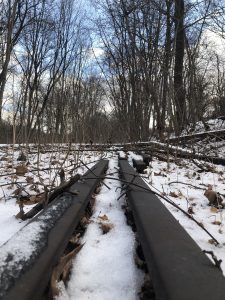
Aptly named, Slatington was home to some of the largest slate quarries in the U.S., producing durable, high quality natural resources that could be used for a multitude of purposes. Despite this, Slatington’s canal and railroad heritage can’t be erased.
A significant portions of Slatington’s growth can be attributed to the opening of the Lehigh Canal, as well as the later built railroad. If you look closely, you can see slate featured in many of the structures found throughout the town- including the bathrooms at the D&L Trailhead- canal locks, and abandoned rails.
Nearby, you can find restaurants, small shops, and one of the county’s oldest family owned hardware stores. You can also travel a short distance to Walnutport, a historic town that has a fully restored locktender’s house.
The Anthracite Region
Jim Thorpe
“The Switzerland of America.” Steep hillsides, narrow streets, terraced gardens, and gorgeous architecture have earned Jim Thorpe its nickname, beckoning people from all over to explore its beauty for close to two centuries.
In the 1820s, several entrepreneurs led by Josiah White formed the Lehigh Coal & Navigation Company, which allowed for the mass shipping of anthracite coal to New Jersey and Delaware, as well as several other major cities like Philadelphia, Trenton, and New York City.
Today, downtown Jim Thorpe is a National Historic District home to two national landmarks: the Asa Packer Mansion and St.’s Mark’s Episcopal Church. But the restored Old Mauch Chunk Railroad Station functions as one of the town’s main attractions, offering visitor’s services and train rides that take you through Lehigh Gorge. Other attractions include The Mauch Chunk Opera House and the Old Carbon County Jail, both of which are just short distances from the D&L Trail.
Or, for those that prefer a more vigorous activity, you can rent a bike and travel along the natural landscapes that helped give Jim Thorpe its nickname. Fat-biking is a popular pastime during this time of year, and the views are particularly beautiful from the middle of the Mansion House pedestrian bridge, where the D&L Trail crosses the Lehigh River!
White Haven
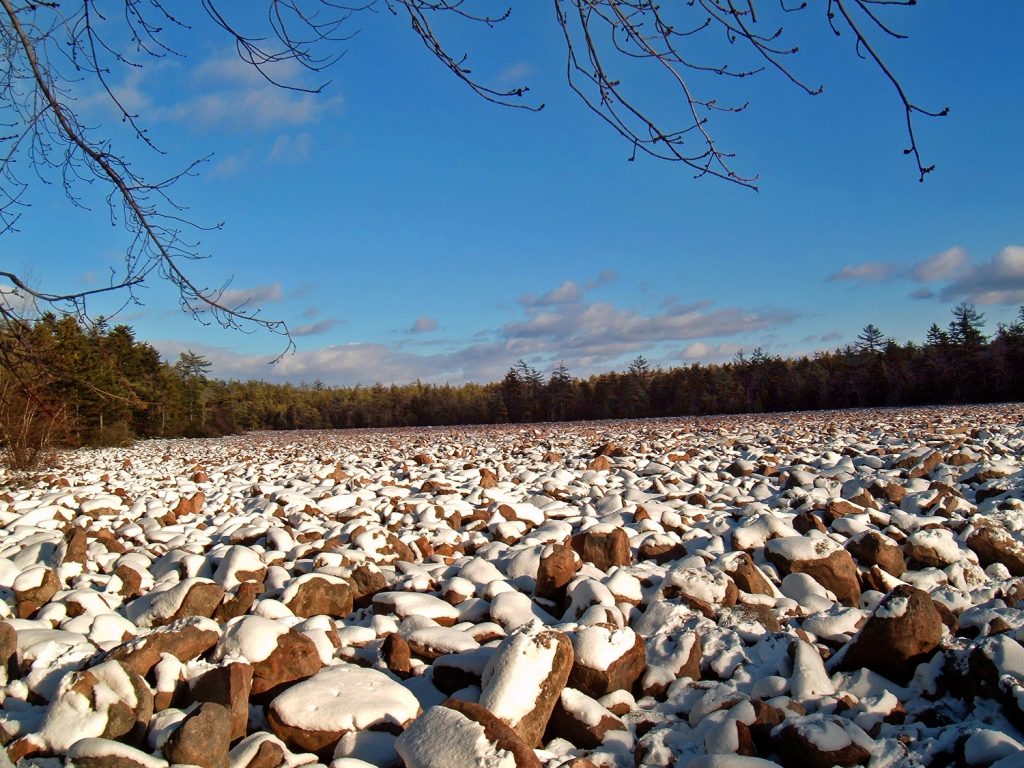
Named after Josiah White, co-founder of the Lehigh Coal and Navigation Co., White Haven stands as the northern-most gateway to Lehigh Gorge State Park.
It’s best known for its summer activities, but add a little snow and you can go snowshoeing, snowmobiling, dog-sledding, bird watching at the boulder field, or skiing at one of the many mountain resorts!
Wilkes Barre
With the gorgeous Susquehanna River flowing through its center, framed by the Pocono Mountains to the east and the Endless Mountains to the west, Wilkes-Barre stands as the northern terminus for the D&L Trail.
Wilkes-Barre is located in what was once the heart of Pennsylvania’s anthracite fields, and thus smack in the middle of the rapid development that defined the industrial period.
One of the best places to glimpse Wilkes-Barre’s splendor is the Luzerne County Historical Society Museum. It has Native American exhibits, anthracite coal displays, and presentations about the region’s major natural and historic events. Nearby is the Luzerne County Courthouse – one of Pennsylvania’s most impressive architectural masterpieces.
You can also visit the Seven Tubs Recreation Area in Pinchot State Park, and explore landscapes carved by the area’s once active glacial history! Wheelbarrow Run – a stream that flows through a ravine of tubs – is often considered the highlight of Seven Tubs!5
**Please note that trail uses, maintenance, and snow amounts will vary throughout the D&L Corridor. Only a few D&L Trail landowners plow their section of trail and other sections are groomed for snowmobiling; keep this in mind when going to explore a new section of D&L Trail.
Always remember to wear the appropriate clothes and footwear, especially during the winter as many of the sections can become iced over even if they’ve been plowed previously.
If a section of the trail that you frequent is owned by the local municipality, township, city, etc. please contact them if the trail remains unplowed or iced over for an extended period of time.

